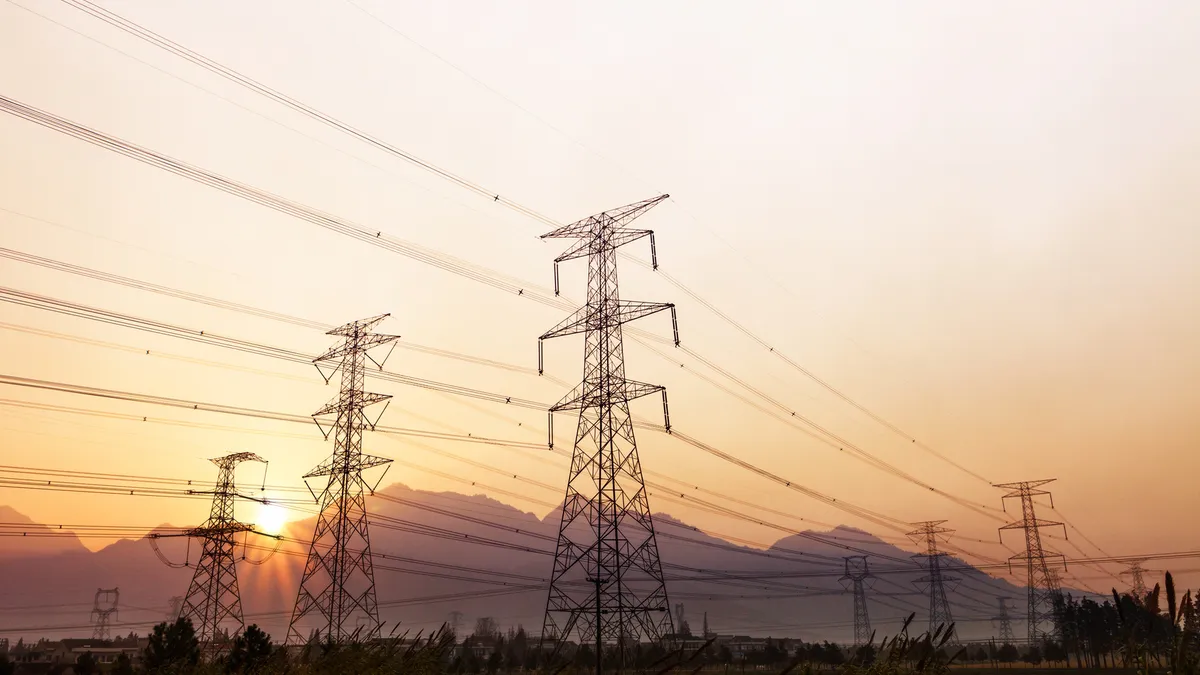Last week, the Department of Energy released its first Quadrennial Energy Review (QER) — essentially, a bill of health for America's energy infrastructure.
Modeled after the Defense Department's regular reviews of American military might, the Obama administration called for the QER in his 2013 climate action plan to assess the state of U.S. energy infrastructure and suggest improvements.
The first QER calls for up to $5 billion to be spent over the next decade to modernize the country's grid infrastructure. While the U.S. has "the most advanced energy systems in the world," the report says the market landscape is quickly changing — and infrastructure needs to adapt.
The report is full of charts that paint a fascinating picture of the energy industry's greatest challenges. Here are 13 of the report's most insightful charts:
1. The decoupling of electricity demand and economic growth
Increases in efficiency combined with the worldwide recession that began in 2008 have some scholars speculating that we are decoupling economic growth from energy demand. This beginning to happen in America.
2. Low demand growth for utilities
It's no state secret that utilities across the country have experienced stagnant or negative load growth since the financial crisis and recession. The drop in electricity sales was especially steep in coal-producing states like Kentucky, Tennessee and West Virginia during the recession. Gas drilling mostly accounted for the boom in electricity demand in North and South Dakota, while demand growth in Texas and Louisiana can be attributed mostly to the regions' continued economic growth.
3. Energy efficiency policy
But while electricity sales were holding steady or decreasing throughout the nation, utilities in some states had little in the way of policy and regulation to keep them financially whole and encourage further investment in energy efficiency.
4. The aging workforce
Making low demand growth more challenging, utilities are increasingly facing these challenges with an aging workforce. Many are rushing to pull together recruitment plans for younger workers to replace those nearing retirement.
5. Transmission investment
Utilities have increased their investment in transmission markedly since 1997, the report finds. Much of that growth comes from transmission built to integrate new renewable resources — high plains wind or utility-scale solar — or new natural gas power plants onto the grid.
6. Gas infrastructure
Constraints in gas pipeline infrastructure has caused problems for many utilities recently, especially during last year's Polart Vortex. The QER makes it easy to see one reason why — nearly half of the nation's gas pipelines were built in the 1950s or 1960s.
7. Gas pipeline incidents
The increasing age of gas infrastructure is one of the factors behind pipeline malfunctions, which cause hundreds of injuries and deaths each year. In California, regulators recently slammed PG&E with a record $1.6 billion fine for the deadly San Bruno pipeline explosion in 2010.
8. Pipeline explosions and methane emissions
Old pipeline infrastructure can be leaky, which poses both safety and environmental concerns. Gas leaks can cause explosions, and methane is an incredibly potent greenhouse gas. Minimizing gas leaks is essential to cutting American greenhouse gas emissions.
After a pipeline explosion in the 1980s, Indianapolis embarked on a citywide program outlined in the QER to identify and fix gas leaks. Compared to a city like Boston, which had no program until recently, the difference is stunning.
9. Greenhouse gas emissions
The United States remains the world's second biggest carbon producer, and President Obama has made greenhouse gas reduction a focus of his second term. Under the administration's proposed Clean Power Plan, DOE forecasts emissions would fall to nearly 30% below 2005 levels by 2025. The administration aims to cut emissions 30% by 2030 with the rule.
10. Emissions-reducing technologies
Based on the DOE's social cost of carbon, there are a variety of technologies that can be cost effective for emissions abatement:
11. The impact of climate change
The electricity generation sector is not only the U.S. economy's biggest producer of greenhouse gas emissions — it is also one of the most vulnerable to the impacts of climate change. Coastal utilities in particular are looking for ways to harden and weather-proof their grids, especially after Hurricane Sandy in 2012. The graph below shows the growing number of billion-dollar disaster events.
12. Severe weather
Experts expect climate change to increase the frequency and severity of precipitation events globally, but those changes will be highly variable based on region. In the U.S., Northeastern states have seen the biggest increase in heavy precipitation of any of the nation, but the Midwest and Southeast have seen significant jumps in heavy storms as well.
13. Climate change and grid infrastructure
If sea levels rise due to climactic changes throughout this century, electricity infrastructure near the coasts will be at increased risk, especially during severe weather events. During Hurricane Sandy, 69 power plants and 102 substations were in areas flooded by storm surge, according to an article in IEEE Power & Energy Magazine. Northeast utilities are currently working to harden their grids to prepare for future climate change.
But it's not just the Northeast that's at risk. DOE modeled a variety of flooding scenarios throughout the century for the heavily industrialized Gulf Coast of Texas and Louisiana. Home to countless oil and gas refineries, as well as port facilities for Mississippi River shipping, the Gulf Coast has seen significant economic growth lately, resulting in more electricity demand growth in Texas and Louisiana than many other regions. However, the region is at such low elevation that dozens of electric substations modeled by DOE will be at risk for flooding even if climate change is not as aggressive as many fear:
That's only a small sample of the insightful information available in the entire report, especially if you are curious about a more detailed analysis of America's natural gas infrastructure. You can download the QER here.














